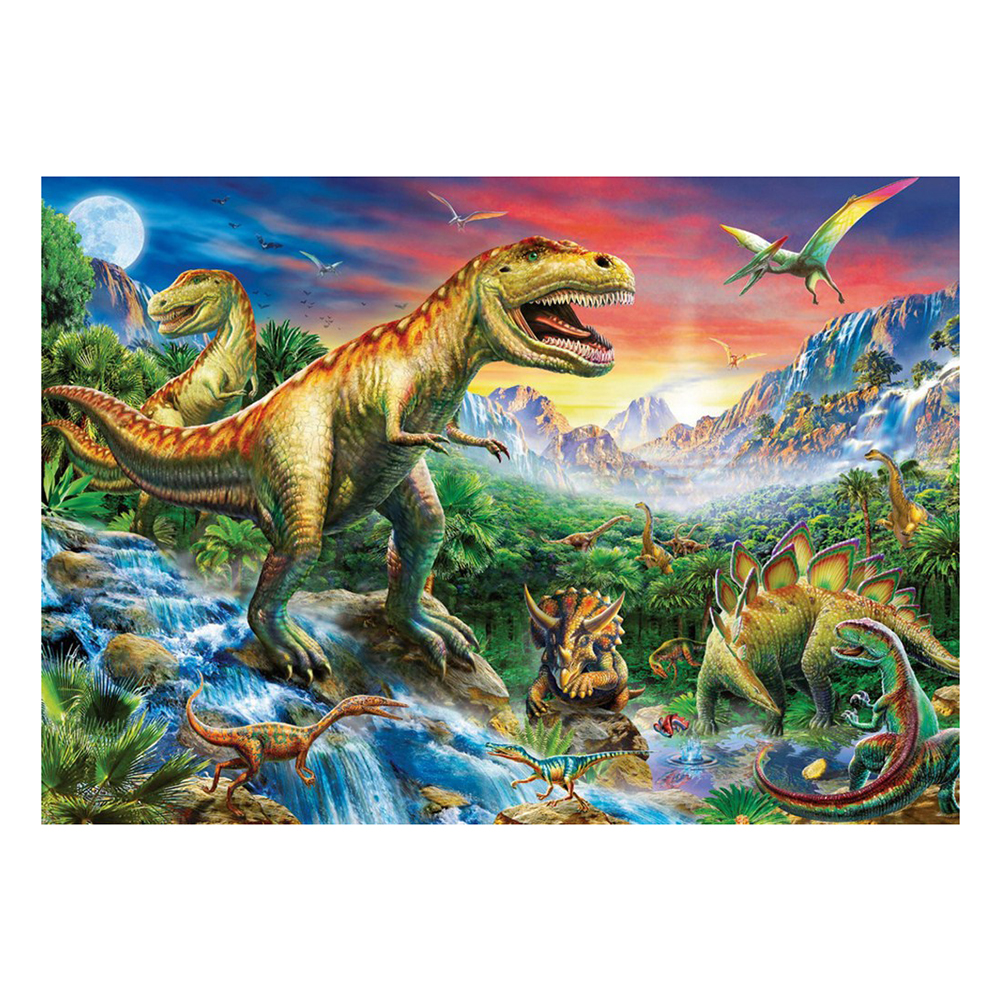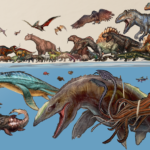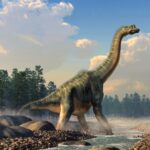The Mesozoic Era, often referred to as the “Age of Dinosaurs,” spanned from approximately 252 to 66 million years ago, and it was during this time that dinosaurs flourished, evolving into a wide variety of species. The Mesozoic is divided into three periods: the Triassic, Jurassic, and Cretaceous, each with its own distinct geological and environmental characteristics. During this era, the Earth’s continents were in the process of shifting due to plate tectonics, which created a variety of habitats where dinosaurs could thrive. So, where did dinosaurs live during the Mesozoic Era? The answer involves a complex interplay of geography, climate, and ecosystems.
The Changing Continents and Environments
During the Mesozoic, the continents were not in the same positions they occupy today. At the start of the era, during the Triassic period, the Earth’s landmasses were united into a supercontinent called Pangaea. Over time, during the Jurassic and Cretaceous periods, Pangaea began to break apart into smaller continents, which would eventually form the modern continents we recognize today. This shifting of continents played a key role in shaping the habitats and distribution of dinosaurs.
Triassic Period (252 to 201 million years ago)
In the early Triassic, Pangaea was a vast landmass that stretched from the North Pole to the South Pole, with a single ocean, Panthalassa, surrounding it. The climate was generally hot and dry, with large deserts and relatively little rainfall. This environment was dominated by early dinosaurs that were still adapting to their surroundings.
- Where did dinosaurs live? During the Triassic, dinosaurs inhabited a variety of environments, including deserts, coastal regions, and floodplains. The interior of Pangaea was arid, limiting plant growth, so early dinosaurs were often small, agile predators and herbivores that thrived in the relatively harsh conditions. Larger herbivorous dinosaurs like the early Plateosaurus roamed along river valleys, while carnivorous dinosaurs such as Herrerasaurus hunted along the edges of deserts and forests.
- Key locations: The fossil evidence from this period suggests that dinosaurs lived in what are now modern-day North America, South America, Europe, and parts of Africa and Asia. The Triassic saw the first dinosaurs appear in regions that would later become the Americas and Europe.
Jurassic Period (201 to 145 million years ago)
By the time the Jurassic period began, Pangaea had started to break apart into two smaller landmasses: Laurasia in the northern hemisphere (containing what would later become North America, Europe, and Asia) and Gondwana in the southern hemisphere (containing what would become South America, Africa, Antarctica, Australia, and India). The climate was generally warmer and more humid, which led to the spread of lush forests, swampy environments, and abundant plant life.
- Where did dinosaurs live? With a more temperate climate, dinosaurs in the Jurassic had access to a wide variety of ecosystems. Large herbivorous dinosaurs like Brachiosaurus, Diplodocus, and Apatosaurus roamed the floodplains, grasslands, and forests of what is now North America, Europe, and Africa. The theropods, such as Allosaurus, were apex predators in these environments, preying on other dinosaurs. Pterosaurs and early marine reptiles, such as Ichthyosaurs and Plesiosaurs, inhabited coastal waters, further diversifying the ecosystems.
- Key locations: During the Jurassic, dinosaurs were spread across a wide range of landmasses. Fossils from North America (particularly the western United States), Europe, and Africa provide evidence of large sauropods and theropods, as well as a variety of smaller species. South America also saw the rise of dinosaur groups such as the early sauropods, including Tupandactylus, and theropods like Carnotaurus.
Cretaceous Period (145 to 66 million years ago)
The Cretaceous period was the final chapter in the Mesozoic Era, and it saw the continents continue to drift apart, creating even more varied and distinct environments. The climate was warm, and many parts of the Earth were covered in dense forests, with the polar regions remaining free of ice. Sea levels were high, flooding many continental areas and creating shallow inland seas, which fostered the evolution of marine life.
- Where did dinosaurs live? Dinosaurs during the Cretaceous period lived in nearly every type of environment, from lush forests and plains to coastal regions and inland deserts. This period saw the appearance of some of the most famous dinosaurs, such as Tyrannosaurus rex, Triceratops, and Velociraptor. Large herbivores, such as Hadrosaurus (duck-billed dinosaurs) and Ceratopsians (horned dinosaurs), thrived in the forests and plains of North America and Asia. Theropods, including large predators like Tyrannosaurus rex and Spinosaurus, dominated as apex predators.
- Marine environments: The Cretaceous seas were teeming with marine reptiles like Mosasaurus, Plesiosaurs, and Ichthyosaurs, as well as large fish, squid, and ammonites. The warm oceans and shallow inland seas provided an ideal habitat for these creatures.
- Key locations: Fossils from the Cretaceous have been found all over the world, with significant discoveries in North America, particularly the western United States (such as the famous Hell Creek Formation). Dinosaurs also lived in Europe, South America, Africa, and parts of Asia, with each region hosting its own unique ecosystems. The formation of inland seas, such as the Western Interior Seaway that split North America in two, created isolated habitats and allowed for distinct evolutionary paths in different parts of the world.
Conclusion: The Global Distribution of Dinosaurs
Throughout the Mesozoic Era, dinosaurs inhabited nearly every part of the Earth, from the deserts of the Triassic to the lush, forested environments of the Cretaceous. As the continents drifted and climate conditions changed, dinosaurs evolved and adapted to a wide range of environments, from coastal regions and floodplains to dense jungles and open plains.
The gradual breakup of Pangaea allowed for the spread of dinosaurs across what would eventually become the continents we recognize today. As a result, dinosaurs were able to occupy an incredible variety of ecological niches, making the Mesozoic Era one of the most diverse and dynamic periods in the history of life on Earth. Although the dinosaurs themselves went extinct at the end of the Cretaceous, their legacy lives on in the birds we see today, which are the direct descendants of certain theropod dinosaurs.



